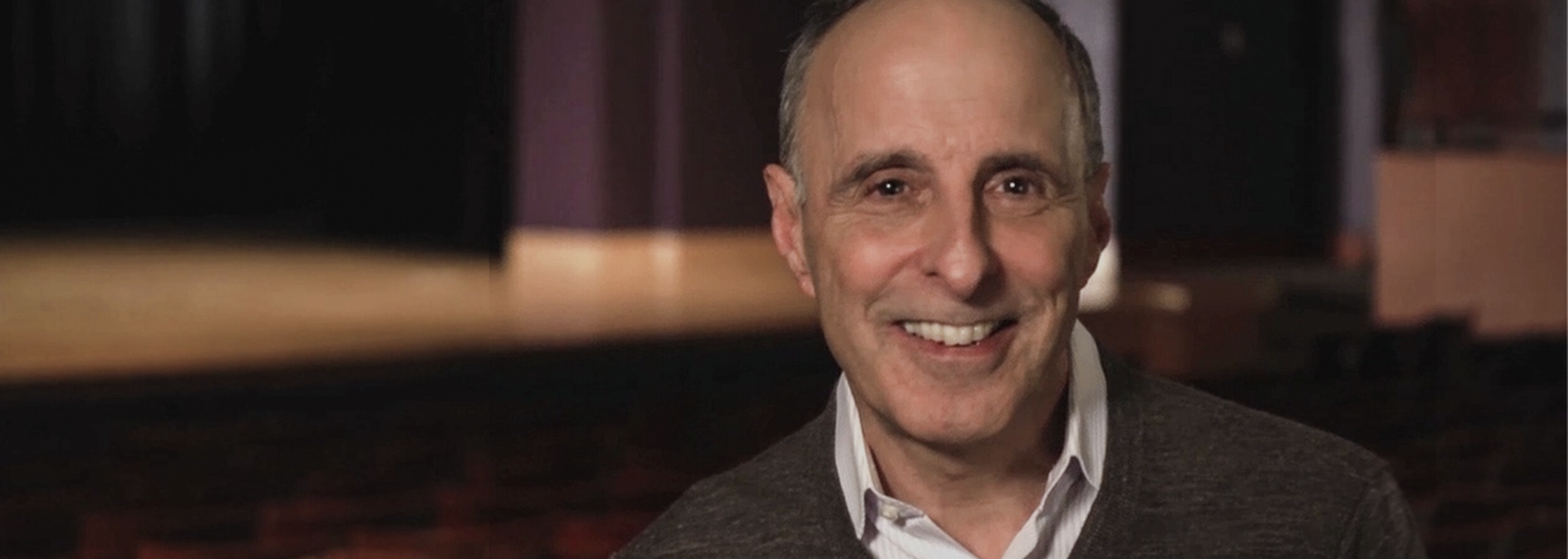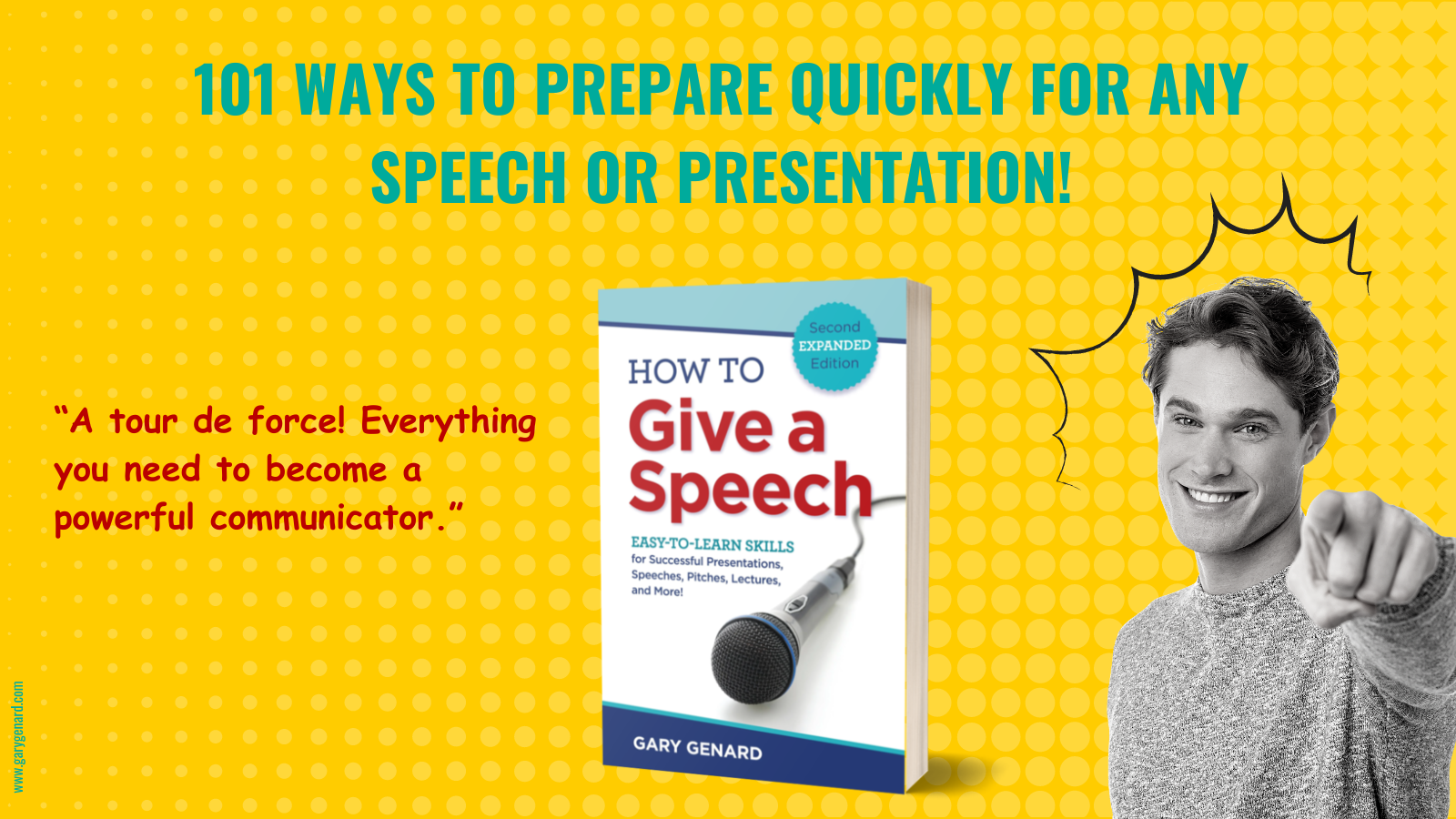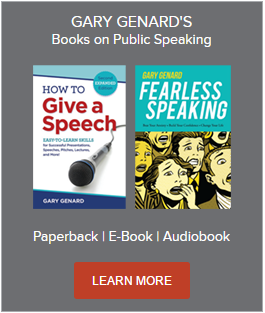Ever had to prepare a speech or presentation at the last minute? Filling a colleague's speaking slot at a conference, for instance? Or realizing yourself that it would be helpful after all to have something prepared for that client meeting?
Ah, pressure. Where would public speaking be without it? 15:00 . . . 14:59 . . . 14:58 . . .
Want a speaking resource that will get you up to speed fast? That's How to Give a Speech. Discover 101 "quick tips" for speaking successfully in business. Also on Amazon.
If you find yourself in a situation where you have to put a speech together quickly, don’t despair. Assuming you have a reasonable knowledge of your topic, here’s a quick-fix tool that can be a lifesaver. It will have you delivering a coherent, logical, and dynamic presentation in no time flat.
Take a deep breath and gird up your loins (it means lift up and tie your tunic so it doesn't get in your way during battle). Then follow these steps, below.
Is fear of public speaking holding you back? Here's my Free Stage Fright Quiz to help you know how much that may be the case. Included is a chart to explain your score!
- Analyze your audience (2 minutes). Who are these listeners? What is your relationship with them? (If you don't have one yet, think about what you can say to establish common ground. And consider the best ways to connect with an audience.) Most important: ask yourself what do they need to hear? That's the reason you're speaking. Keep in mind that they may not be aware of what it is until you tell them! Remember: how you deliver a speech is as important as the content!
- Decide on your central idea (3-5 minutes). What one thing do you want them to take away from this presentation, i.e., your critical message? Make it concrete, and if possible, memorable! Be sure you know the most effective ways to start a speech, and how to end one to make your conclusion "sticky."
- Choose one organizing format from the list below (6-8 minutes). These are ready-made to serve your purpose efficiently and effectively.
Stage fright doesn't only affect people while presenting. It can interfere with your planning and create anticipatory anxiety. Here's help: my book Fearless Speaking. On Amazon.
The Four Organizing Formats
- Position-Evidence-Show-It-In-Action. State your position, then back it up with at least one form of evidence (more is better). Try to use forms of proof that will resonate with this audience, e.g., a customer testimonial from the same industry if you're pitching new business. Give at least one example of such evidence in action, i.e., show it at work. Then restate your position strongly as you close. And know the words you should avoid in speeches and presentations.
- Tell the Past, Present, and (Maybe) the Future. In other words, use chronology as an organizing tool. A great example of this is a new employee orientation session, where you as speaker give the new hires a quick tour of the company's history, where it is now, and where it's headed. An advantage of this approach is that it's simple to build (for you) and to follow (for them).
- Problem-Solution. Use this type of organization when your audience isn't familiar with the problem at hand. (If they are, you can switch to a Comparison of Possible Solutions.) This structure both informs and gives the impression of considered analysis. It follows a natural progression while it introduces a problematic issue then provides a solution. Elegant!
- Storytelling. This is your best “hook” for getting an audience onboard right away. Stories not only get listeners to pay attention quickly and relate in human terms. They also release your own expressiveness and passion without self-consciousness. Because you’re emotionally involved, your audience will be too. You’ll touch the minds and hearts of your listeners, and your message will come alive.
Of course, these four types of speech organization are effective for longer presentations as well. When that's the case, you'll find yourself filling out each segment with a deeper dive and especially, more great examples of your evidence in action.
For now though, when you're in the speech pressure cooker, apply the above template. Remember: the influence you increase may be your own!
You should follow me on Twitter here.

Gary Genard is an actor, author, and expert in public speaking and overcoming speaking fear. His company, The Genard Method offers live 1:1 Zoom executive coaching and corporate group training worldwide. The Genard Method was listed as "One of the Top 10 Communication Training Programs in the World." Dr. Genard has also named as "One of America's Top 5 Speech Coaches." He is the author of the Amazon Best-Seller How to Give a Speech. His second book, Fearless Speaking, was named in 2019 as "One of the 100 Best Confidence Books of All Time." His handbook for presenting in videoconferences, Speaking Virtually offers strategies and tools for developing virtual presence in online meetings. His latest book is Speak for Leadership: An Executive Speech Coach's Secrets for Developing Leadership Presence. Contact Gary here.
Main photo credit: Lucian Alexe on unsplash.com





